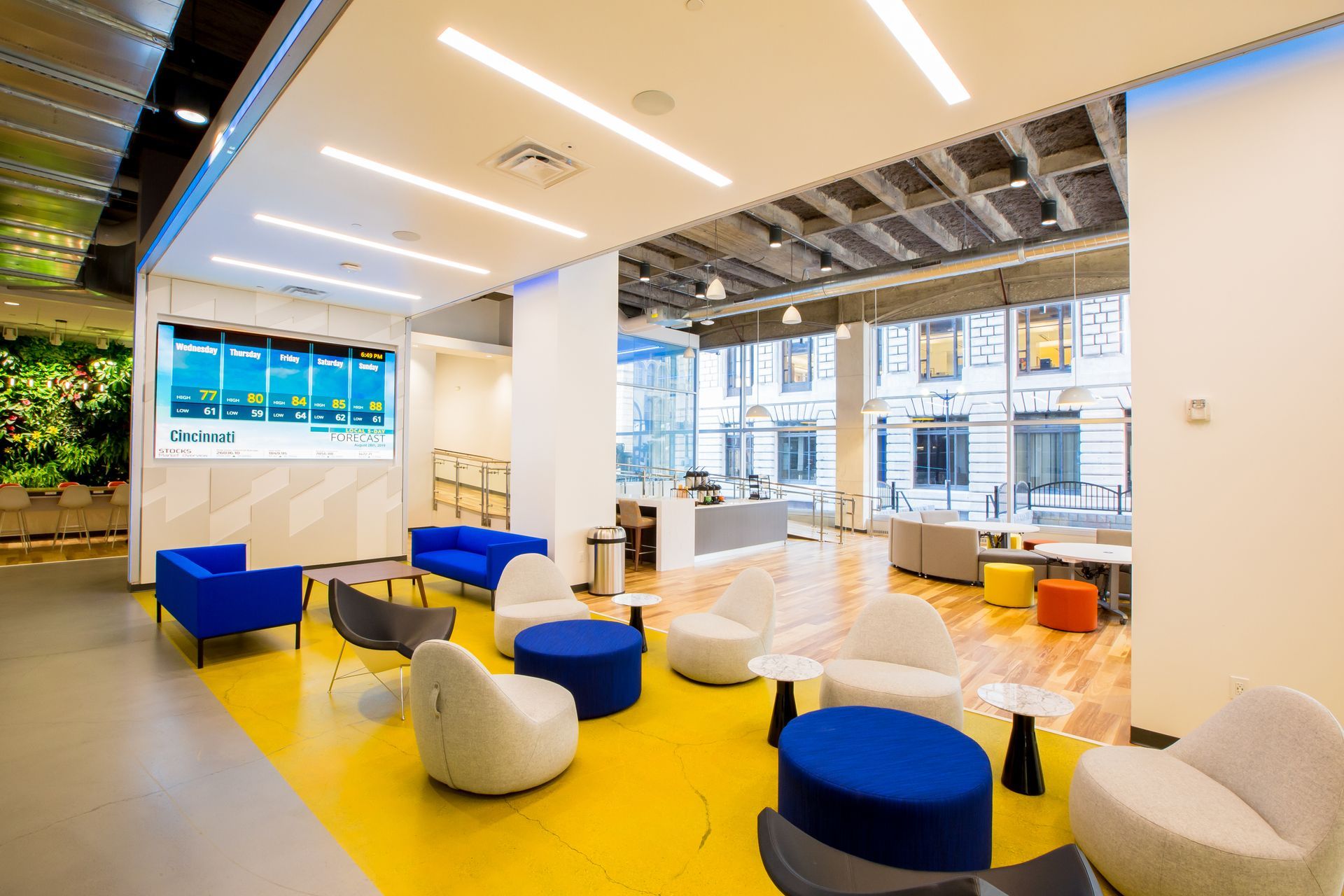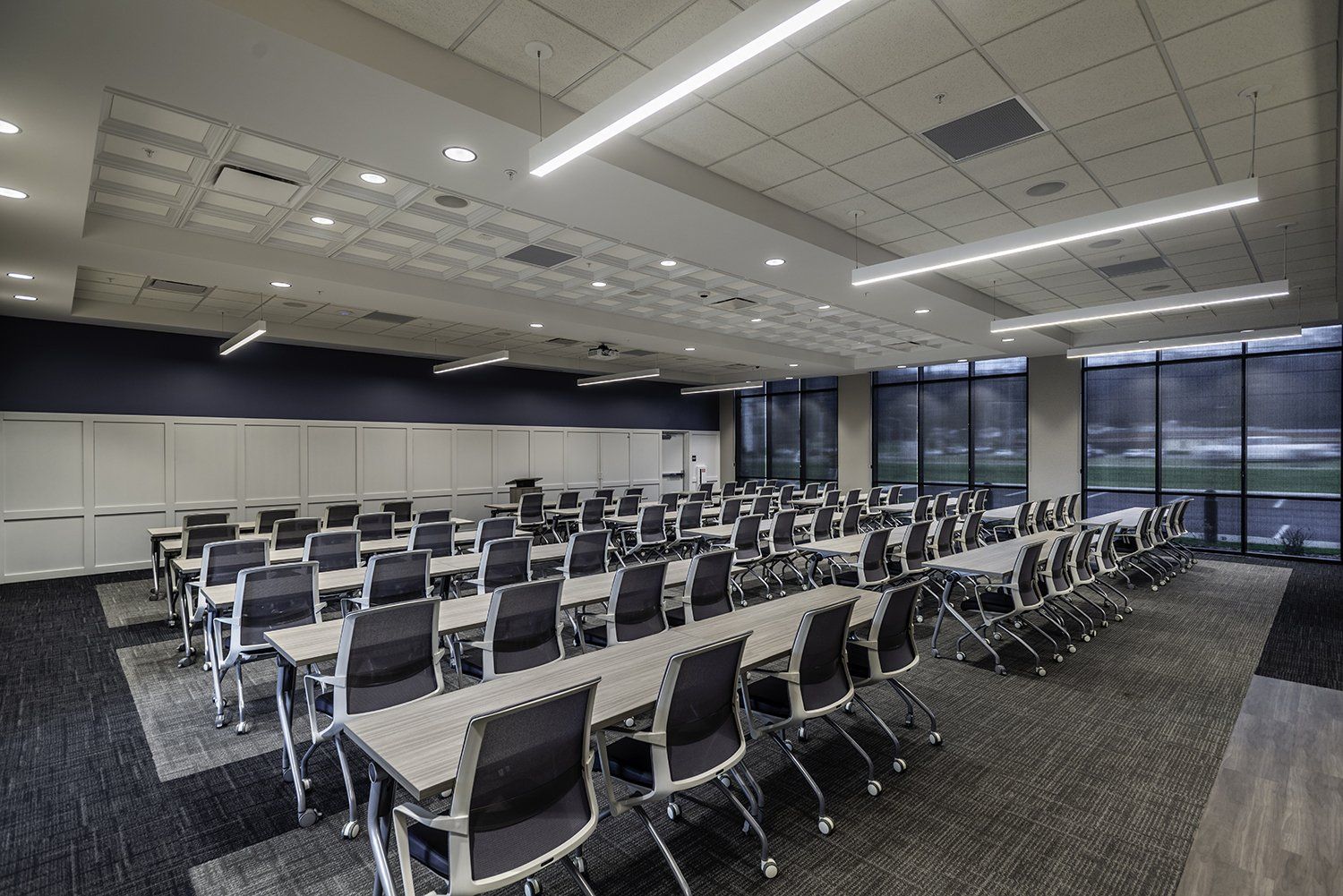By: Jeff Klump,
President of K4 Architecture + Design
Menu
Follow us on:

As the financial landscape evolves, so too does the role of the retail bank branch. While digital banking solutions continue to grow in popularity, the physical branch remains a critical touchpoint for many customers. Designing these spaces to appeal to multiple generations - Baby Boomers, Gen X, Millennials, Gen Z, and beyond - requires a thoughtful approach that balances tradition with innovation. Keen attention must be paid to crafting environments that not only serve current needs but also anticipate future trends, ensuring community banks and credit unions remain relevant and connected to their customers.
Each generation brings its own expectations, preferences, and habits to the table. Baby Boomers may appreciate the familiarity and personal touch of a traditional branch, while Millennials and Gen Z are more likely to prioritize digital accessibility, sustainability and modern design. The key to designing a branch that appeals to all is understanding these differences and creating a space that feels inclusive, functional, and forward-thinking.
For Baby Boomers, the branch is often seen as a place of trust and personal connection. This generation grew up in an era where face-to-face interactions were the norm, and they value the relationship they’ve built with their local financial institution. To appeal to this demographic, branch design should emphasize comfort, familiarity, and a sense of community.
Key Design Elements:
Generation X sits at the intersection of tradition and technology. While they appreciate the convenience of digital banking, they still value the option to visit a branch for more complex transactions or personal service. For this generation, flexibility and efficiency are key.
Key Design Elements:
Millennials, the largest generation in the workforce, are known for their tech-savvy nature and preference for experiences over transactions. They expect their bank to offer not just services, but also a seamless, enjoyable experience—both online and in-person.
Key Design Elements:
As the first true digital natives, Gen Z is accustomed to having the world at their fingertips. While they may not yet be the primary customers for many community banks and credit unions, designing branches with this generation in mind is crucial for future-proofing your institution.
Key Design Elements:
Creating a retail bank branch that appeals to multiple generations involves more than just selecting a few design elements for each age group - it’s about blending these elements into an environment that feels welcoming and functional for everyone. By thoughtfully integrating the warm, inviting spaces favored by Baby Boomers with the streamlined, tech-forward features preferred by Millennials and Gen Z, and making connections to the local communities they serve, financial institutions can create a versatile branch that meets the needs of all customers.
For instance, incorporating private meeting rooms alongside communal areas and co-working spaces ensures that the branch can serve as both a place for personal consultations and a hub for community interaction. Meanwhile, modern aesthetics and engaging technology, such as interactive displays and digital kiosks, can be seamlessly integrated with clear signage and wayfinding tools, and community or history walls, to enhance the overall customer experience.
By embracing sustainability through eco-friendly materials and energy-efficient systems, the branch not only appeals to environmentally conscious younger generations but also demonstrates a forward-thinking approach that resonates across all age groups. Ultimately, the goal is to create a branch that doesn’t just cater to one generation but instead provides a versatile, adaptable space that evolves with the community it serves.
As we look ahead, the retail branch of the future will likely be a blend of physical and digital experiences, designed to serve customers across all generations. The key is to create a flexible, adaptable space that can evolve with changing needs and preferences.
At K4 Architecture + Design, we believe that a successful retail branch is more than just a physical space; it’s an extension of your brand. Every element, from the architecture and interior design to the signage and digital touchpoints, should work together to create a cohesive, memorable experience for your customers.
By designing branches that appeal to multiple generations, community banks and credit unions can build lasting connections with their customers, fostering loyalty and trust. Whether you’re looking to refresh your current branches, integrate new technologies, or design a brand-new space, the retail branch of tomorrow is one that serves every generation and positions your institution for long-term success.






